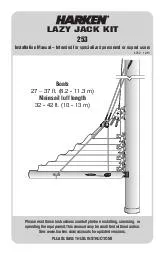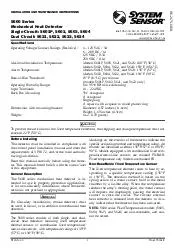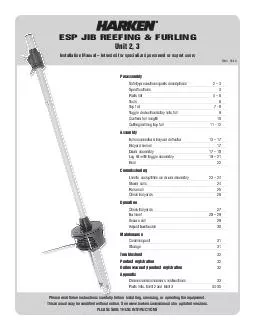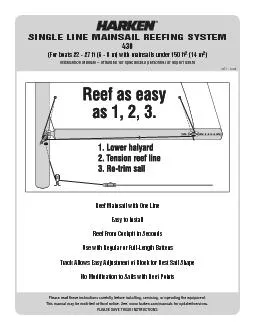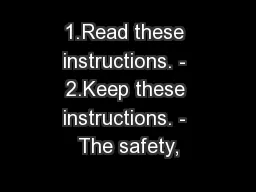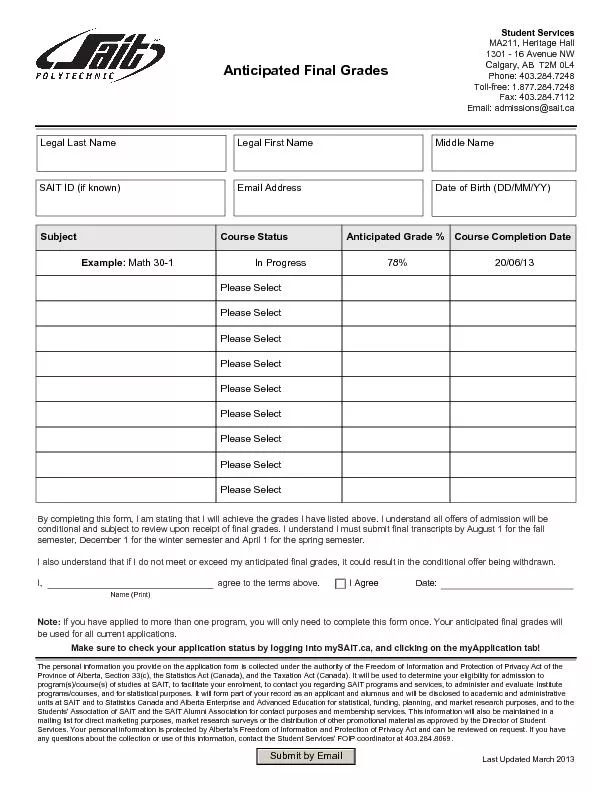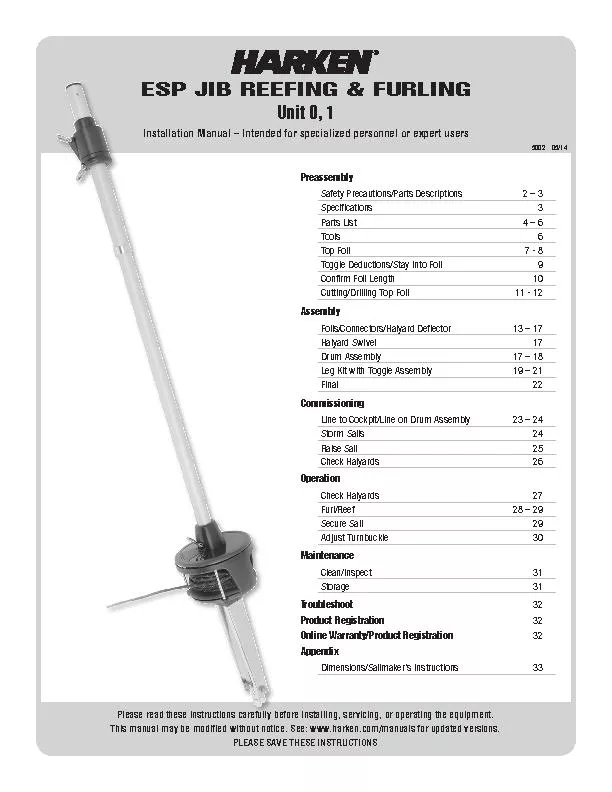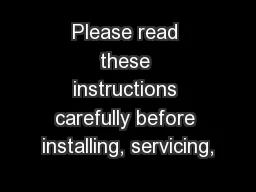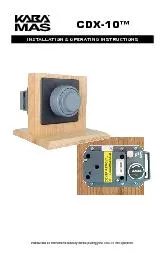PDF-Please read these instructions carefully before installing, servicing,
Author : min-jolicoeur | Published Date : 2015-08-05
LAZY JACK KIT253Installation Manual 150 Intended for specialized personnel or expert users4059 27 150 37 ft 82 113 m32 42 ft 10 13 m 2 Tools RequiredTape measureDrill
Presentation Embed Code
Download Presentation
Download Presentation The PPT/PDF document "Please read these instructions carefully..." is the property of its rightful owner. Permission is granted to download and print the materials on this website for personal, non-commercial use only, and to display it on your personal computer provided you do not modify the materials and that you retain all copyright notices contained in the materials. By downloading content from our website, you accept the terms of this agreement.
Please read these instructions carefully before installing, servicing,: Transcript
Download Rules Of Document
"Please read these instructions carefully before installing, servicing,"The content belongs to its owner. You may download and print it for personal use, without modification, and keep all copyright notices. By downloading, you agree to these terms.
Related Documents

